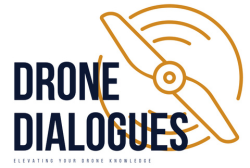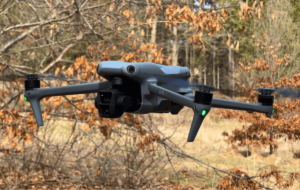DJI MINI 3 pro aims to be the perfect blend between small and affordable with also being high quality professional images. So let’s dive right into my thoughts on the drone who it’s for and some pros and cons to be aware of.
The pros
This drone is mini meaning it’s small, lightweight and portable weighing in at less than 249 grams making it regulatory friendly. But pro in the name suggests that despite its size it will deliver a high quality image worthy of professionals but what makes this mini more pro then previous minis is the bigger sensor size the new gimbal design provides a one over 1.3 inch sensor a 48 megapixel camera and 4k at 60 frames per second and 1080p at 120 frames per second. Now comparing that to the previous model the mini 2. It has a one over two thirds inch sensor and a 12 megapixel camera and maxes out at 4k at 30 frames per second. So the sensor has almost doubled in size and frame rate capacity is doubled as well.
Now on the topic of image quality this sensor also sports a dual iso which directly outputs HDR footage. Basically meaning you have less blown out highlights and less crushed shadows which again aids the overall quality of the footage. So sensor size increased frame rates and image quality for me are the top features.
Another feature that I love is the option to buy a built-in screen for the remote control. They do have less expensive options to buy the remote that hooks up to your phone but there’s something about having to whip out my phone and drain my battery and not having access to use my phone while I’m operating a drone. That deters me from pulling out my drone more often so I personally think the extra money is worth having the built-in screen.
Along with this new remote is the new OS image transmission system this upgrade includes the move from dual antennas to four antennas bringing you a full HD live feed from up to 12 kilometers if there’s no interference or obstructions. So this should reduce the frequency that your feed cuts out which can make or break a shot overall. In my experience the feed has been solid. I experienced a cut out, a little bit when going behind big buildings or when getting about a mile away or about two kilometers. So the 12 kilometer metric really means no obstructions which in most flying situations you’ll have some obstructions. So just be aware that 12 kilometers means you have a perfect line of sight with completely no obstructions.
Other new features include
The true vertical shooting mode which allows you to shoot in portrait mode if you create a lot of vertical videos and along with that is a feature called quick transfer that allows you to connect the drone to your phone quickly to transfer files and upload directly to social media on the spot. I have noticed an increase of video clients asking for portrait orientation content for TikTok and Instagram so I do think this is a great new feature to include to future proof these new drones.
It also has improved the battery life giving you 34 minutes of flight time which matches the Mavic air 2 but with mini 3 you now have the option to buy an extra large battery which will give you 47 minutes of flight time and allow you fly farther and longer for scenarios like hyperclasses for example. I personally clocked the mini 3 pro regular battery at around 25 minutes. So definitely not anywhere near 34 minutes but it’s still plenty of time.
This drone also apparently has increased wind resistance. With how small these drones are, wind can pick up and affect the smoothness of your shot. So it is a concern with the size of the minis.
This drone also supports tri-directional obstacle sensing. The obstacle sensing works great in all the scenarios that I used, it keeps me safe from hitting anything.
As for the photo side of things, It can take 48 megapixel. Still, however, a megapixel doesn’t mean much to me personally unless they are in a larger sensor size. So it’s not going to take photos like my canon r5 for example. But it will in my opinion take better photos than my iphone 13 pro.


The Cons
This drone does not have 10-bit color depth. It is 8-bit only which gives you the option to shoot in a platter profile called d-cinelike. But I’m not a big fan of shooting in a flat profile without at least 10-bit color depth as it will give you banding and artifacting as you try and push the colors back up to a normal level. That’s why I personally recommend just shooting in the normal standard profile on this specific drone.
Also as I already mentioned the sensor is still on the smaller side compared to some of DJI’s more professional models. So the image will be more compressed but, like I mentioned it is almost double the size of the mini 2 sensor and I really could tell a difference in compression and overall quality improvement between the two. So if you’re not ready to invest in something like the Mavic 3 pro but you want a starter drone that’s going to give you an image that can be passable in professional situations then the mini 3 pro is going to be a great place to start.
And this brings me to the question ‘’can you depend on this drone professionally’’? I would say it depends on the level of the project. For your local real estate videos for a couple establishing shots in a wedding video for a local commercial needing one shot of their building for a travel video showing landscapes I would say yes this is going to be passable and with the convenience.
In conclusion, DJI Mini 3 Pro is an excellent choice for beginners and professionals alike, offering impressive imaging capabilities in a compact and affordable package. While it may have some limitations compared to higher-end models, it provides a solid foundation for capturing professional-grade footage in a wide range of scenarios.



